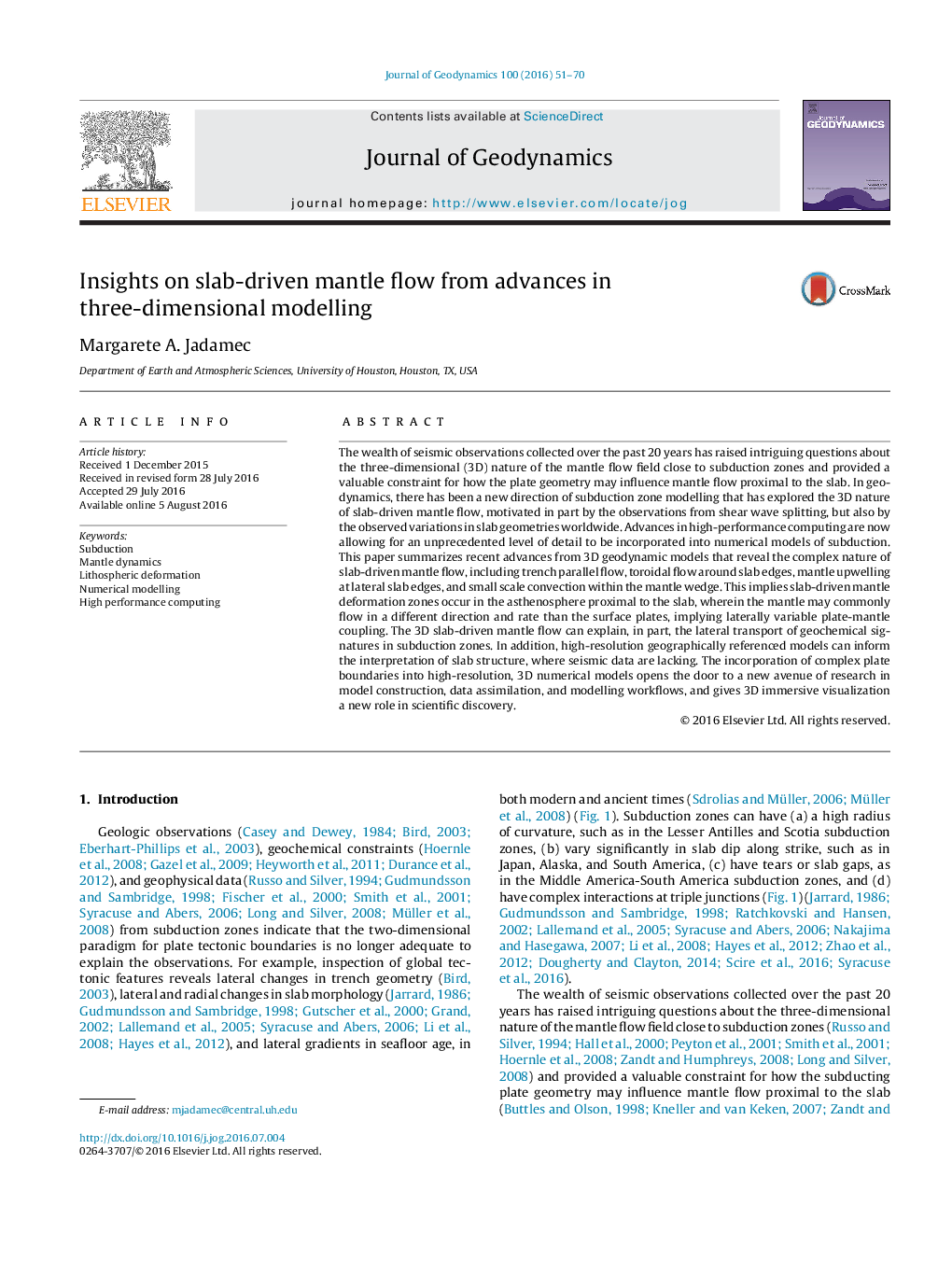| کد مقاله | کد نشریه | سال انتشار | مقاله انگلیسی | نسخه تمام متن |
|---|---|---|---|---|
| 6433067 | 1635750 | 2016 | 20 صفحه PDF | دانلود رایگان |
- Reviews recent results on slab-driven mantle flow from 3D subduction models.
- Increase in computing capabilities enables a new direction in subduction modelling.
- Slab edge driven mantle upwellings may drive anomalous volcanism.
- Slab-driven mantle deformation zones and variable plate-mantle coupling develop.
- High-resolution 3D geodynamic models can be used to constrain slab structure.
The wealth of seismic observations collected over the past 20 years has raised intriguing questions about the three-dimensional (3D) nature of the mantle flow field close to subduction zones and provided a valuable constraint for how the plate geometry may influence mantle flow proximal to the slab. In geodynamics, there has been a new direction of subduction zone modelling that has explored the 3D nature of slab-driven mantle flow, motivated in part by the observations from shear wave splitting, but also by the observed variations in slab geometries worldwide. Advances in high-performance computing are now allowing for an unprecedented level of detail to be incorporated into numerical models of subduction. This paper summarizes recent advances from 3D geodynamic models that reveal the complex nature of slab-driven mantle flow, including trench parallel flow, toroidal flow around slab edges, mantle upwelling at lateral slab edges, and small scale convection within the mantle wedge. This implies slab-driven mantle deformation zones occur in the asthenosphere proximal to the slab, wherein the mantle may commonly flow in a different direction and rate than the surface plates, implying laterally variable plate-mantle coupling. The 3D slab-driven mantle flow can explain, in part, the lateral transport of geochemical signatures in subduction zones. In addition, high-resolution geographically referenced models can inform the interpretation of slab structure, where seismic data are lacking. The incorporation of complex plate boundaries into high-resolution, 3D numerical models opens the door to a new avenue of research in model construction, data assimilation, and modelling workflows, and gives 3D immersive visualization a new role in scientific discovery.
Journal: Journal of Geodynamics - Volume 100, October 2016, Pages 51-70
